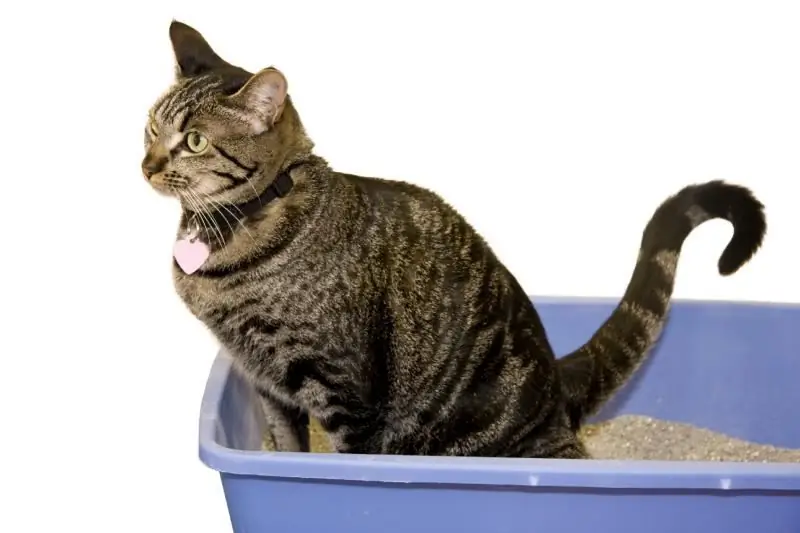
Table of contents:
- Author Bailey Albertson [email protected].
- Public 2023-12-17 12:53.
- Last modified 2025-06-01 07:32.
Using vaseline oil for constipation in cats and kittens

Constipation - partial or complete absence of bowel movements. With prolonged stool retention, veterinarians recommend using medical vaseline oil, which will bring relief to the animal and help gently release the intestines from feces.
Content
- 1 Properties and uses of vaseline oil
-
2 Dosage and methods of treatment
- 2.1 Oral use of vaseline oil
-
2.2 How to make micro enema
2.2.1 Video: how to properly give a cat an enema
- 2.3 Treatment of kittens
- 3 Contraindications and side effects
- 4 Prevention of constipation
- 5 Owner reviews
Properties and uses of vaseline oil
Vaseline oil is safe for health, colorless, tasteless and odorless, does not adversely affect the animal's body and is excreted unchanged.

Vaseline oil is colorless and odorless and tasteless
It is used as an oral or rectal laxative for constipation. It envelops the intestinal walls with an oil film, softens stool and triggers the natural motility of the gastrointestinal tract. Food moves easily through the rectum and a gentle bowel movement occurs.
Dosage and methods of treatment
A single dose of vaseline oil for an adult animal is 5-10 ml orally. With repeated use of vaseline oil, a pause of 4-5 hours is maintained. The daily dose of the drug should not exceed 20 ml. In some cases, the cat can be given a micro enema.
Taking vaseline oil by mouth
For oral administration, only medical vaseline oil is used, which is given to the animal in its pure form. This requires a medical syringe without a needle:
- The medicine is drawn into a syringe.
- The cat is put on its knees sideways or with its back to itself and is held by hand.
-
The syringe is placed in the mouth between the cheek and teeth, closer to the root of the tongue.

The cat is given oral medicine from a syringe A syringe without a needle is placed closer to the root of the tongue
- The head of the animal is slightly raised and the oil is carefully injected, controlling that the pet has time to swallow the medicine.
If after 3-4 hours no bowel movements have occurred, the cat is given 5-6 g of oil again, after an hour the procedure is repeated in the same dosage.
Vaseline oil is not given more than 5 times. If after the procedures performed, defecation does not occur, the pet will need urgent veterinary assistance.
How to make micro enema
With prolonged constipation, it is recommended to give the cat an enema:
- The syringe acquired in veterinary pharmacy gaining 5-10 ml (depending on the animal's weight) of medical vaseline oil in its pure form or diluted by half with water and warmed to a temperature 36 of S.
- Lubricate the tip of the pear with a lubricant and gently insert it into the lumen of the rectum by 1.5-2 cm.
- If defecation does not occur within 10 minutes, the procedure is repeated after 3 hours at the same dosage.
- If the cat could not empty himself after the second microclysters, it means that you cannot do without the help of a veterinarian, since the intestines can be clogged with fecal stones and, possibly, surgery will be required.

It takes two people to give a cat an enema
Video: how to properly give a cat an enema
Treatment of kittens
Kittens are treated in the same way as adult animals. The differences are only in dosage: the oil is given to the baby orally once a day at the rate of 1 ml per 1 kg of body weight. If the kitten is unable to empty the intestines on its own after 12-16 hours, you should immediately seek help from your veterinarian. An enema for a baby can be done on its own only in extreme cases, since the intestinal walls of a kitten are very easy to damage.
Contraindications and side effects
As a laxative, petroleum jelly is given to a pet only after prior consultation with a veterinarian. The drug is categorically not recommended for use if:
- have inflammatory diseases of the gastrointestinal tract;
- the pet has a high temperature, accompanied by fever;
- the cat is pregnant or lactating;
- there is an operation on the peritoneum;
- the cat has intestinal volvulus;
- have chronic constipation;
- there are intestinal bleeding;
- there is an individual intolerance;
- deworming has recently been carried out.
When giving the medicine in the dosage recommended by the doctor, no side effects are observed
Rarely happen:
- involuntary leakage of oil and the exit of feces from the anus;
- lack (hypovitaminosis) in the body of fat-soluble vitamins A, D, E, K, which leads to slow growth, rickets, impaired reproductive function, poor blood clotting.
- the formation of nodules in the intestine, leading to malignant tumors.
Prevention of constipation
Constipation prevention consists of several components:
- The owner is advised to completely revise the pet's diet. Dry food should be of high quality, with sufficient fiber in the composition. A container with water is placed near the bowl with feed, since the lack of liquid contributes to the hardening of feces.
- When eating natural products, fermented milk products, fresh herbs and cereals are included in the diet. You can not feed the animal with chicken and fish bones.
- Long-haired pets need regular combing so that when licking, hair does not accumulate in the digestive tract. There are also special preparations (malt paste) for the timely removal of swallowed wool.
- Providing the required level of physical activity: outdoor games, long walks.
- Scheduled deworming is performed every 2-3 months, worms often cause intestinal blockages.
- Regular visits to the veterinarian for the purpose of preventive examinations and prevention of constipation and various diseases.
Owner reviews
You should not often use liquid paraffin for constipation in a pet, artificial stimulation to defecate is addictive. If the animal suffers from chronic constipation, an experienced veterinarian should be consulted to determine the cause of this condition, since even after the symptoms have been eliminated, the root cause will remain.
Recommended:
Milbemax For Cats: Instructions For Tablets For Worms, Composition And Dosage, Analogs, Use In Adult Cats And Kittens, Reviews
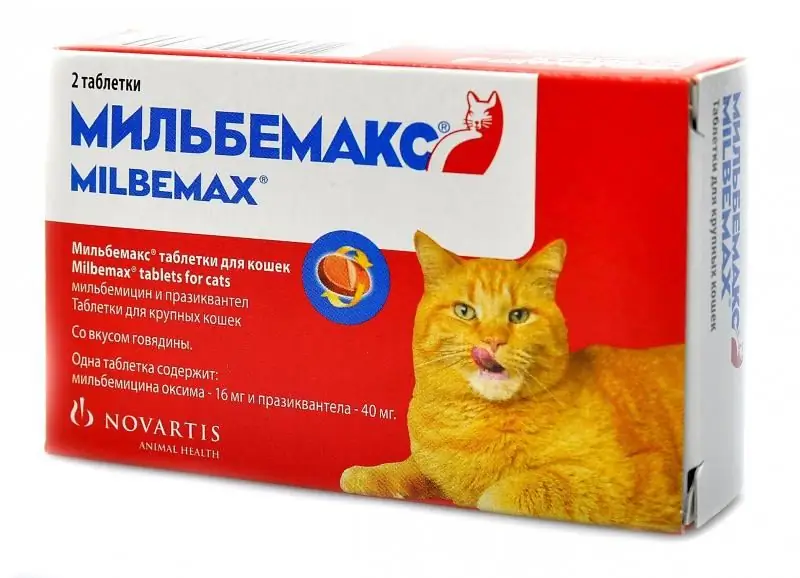
Does Milbemax help cats with helminths? Composition of the preparation. Mechanism of action. How to apply correctly. Possible side effects. Cat owners reviews
Fosprenil For Cats And Cats: Instructions For Use In Kittens And Adult Animals, Contraindications And Side Effects, Price, Reviews
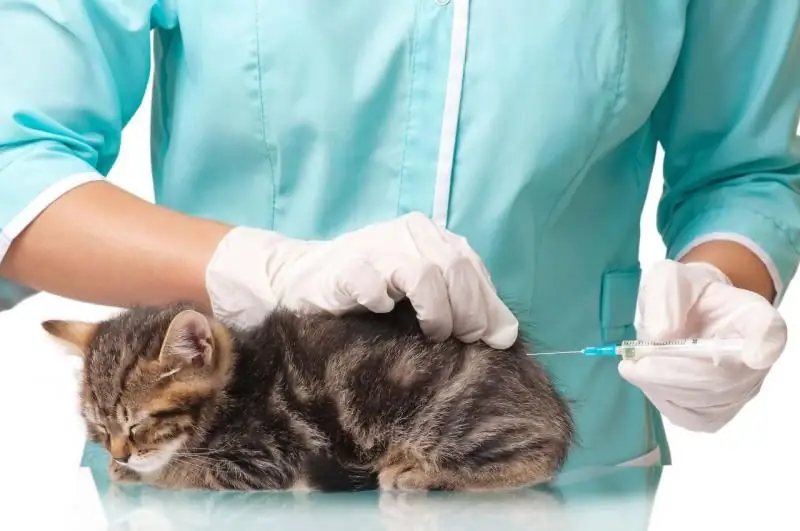
What is Fosprenil used for in cats: composition and release form of Fosprenil; indications for use; contraindications and side effects
Nobivak For Cats And Cats: Instructions, Vaccine Price, Reviews On The Use In Kittens And Adult Animals, Analogues

Types of Nobivac vaccines for cats: Trikat Trio, Rabies, Forkat, Bb. Vaccination schedule. Method of administration. Contraindications. Possible consequences. Analogs
How To Remove Fleas From Cats And Cats At Home: How To Get Rid Of Them From Kittens And Adult Animals By Folk And Other Means, Photo
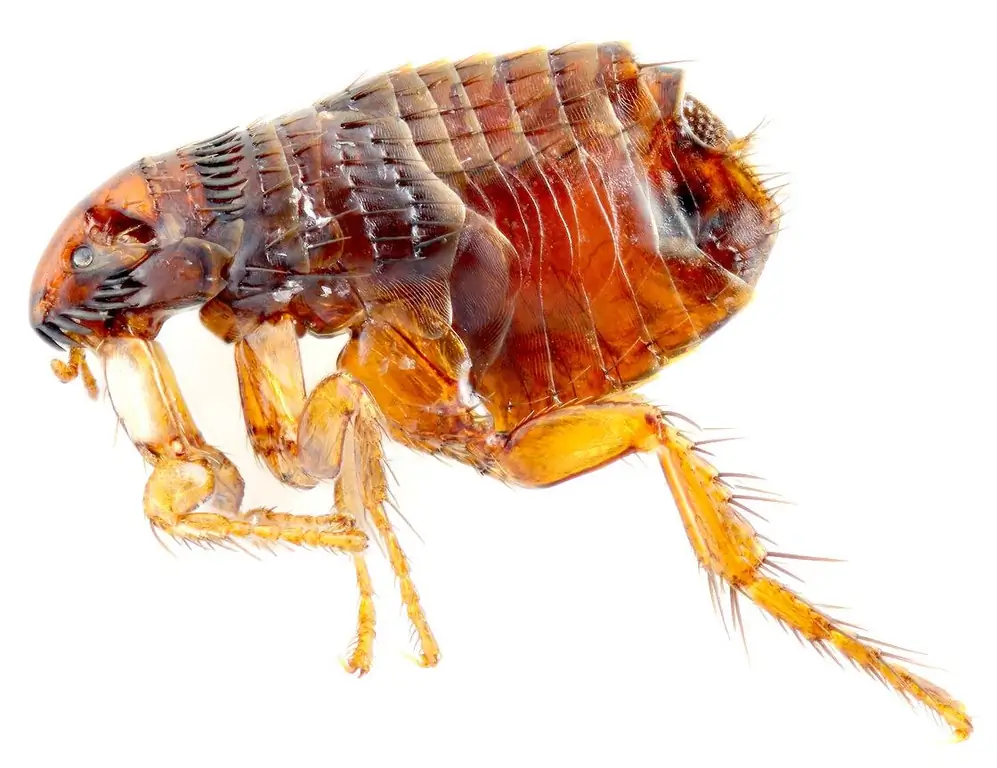
Flea life cycle. What is their danger to a cat? How to destroy fleas: drugs, folk remedies. How to prevent your pet from getting infected
How To Wean A Cat And A Cat To Tear Wallpaper And Furniture, Features Of Weaning Kittens And Adult Animals, Useful Tips And Tricks, Reviews
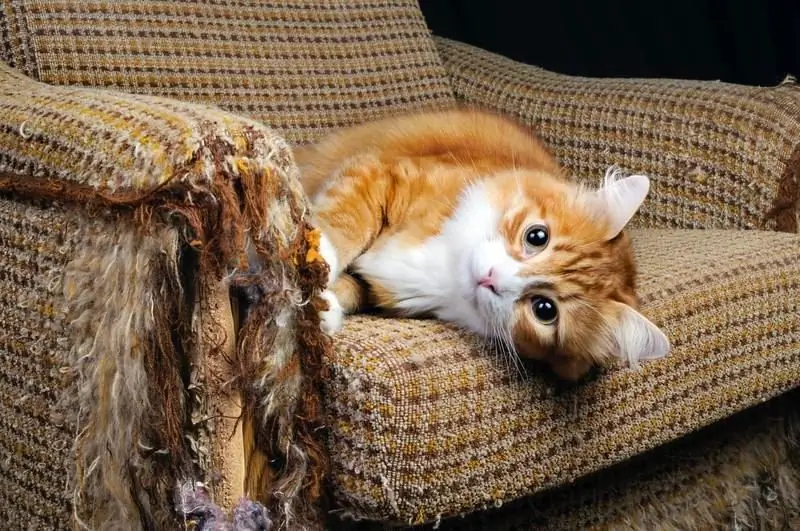
Why does a cat tear wallpaper and furniture? How to prevent damage to property. What to do if you can't wean your cat
